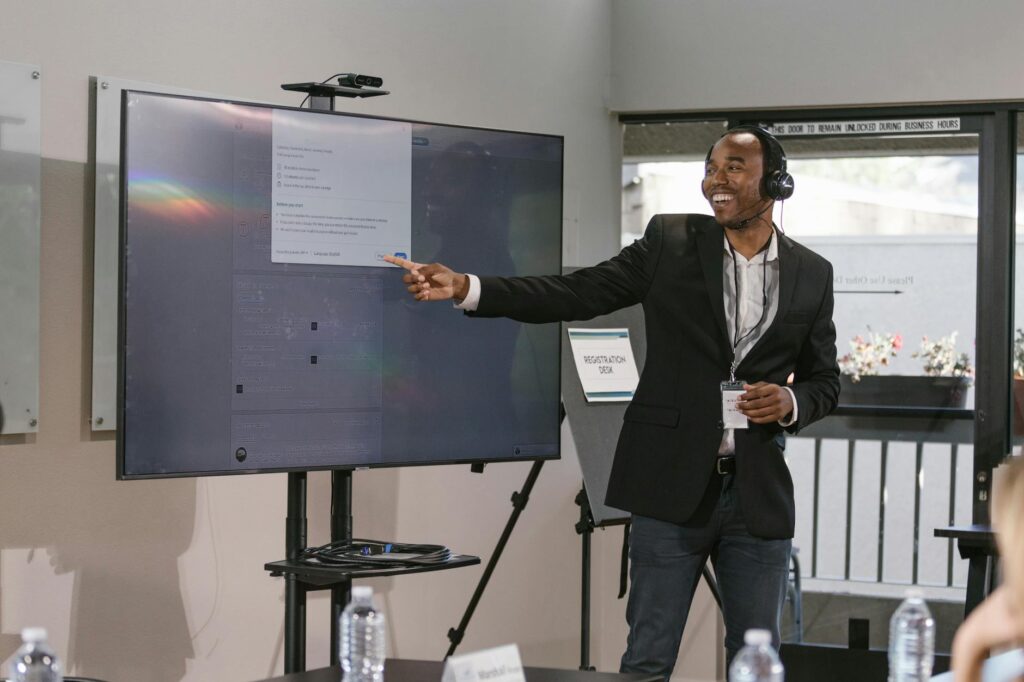What is multimedia learning?

What is multimedia learning?
Multimedia learning is an educational approach that combines various forms of media to enhance understanding and retention of information. It integrates text, images, audio, video, and interactive elements, creating a rich learning environment that engages multiple senses. As we navigate a world flooded with information, multimedia learning stands out as a method that caters to diverse learning styles and preferences, making it increasingly significant in today’s education landscape.
Defining Multimedia Learning
At its core, multimedia learning is about the effective use of multiple forms of media to facilitate learning. It goes beyond traditional methods, where information was often presented solely through text or lectures. Instead, multimedia learning encompasses various components that create a more immersive experience.
The Concept of Multimedia Learning
The principles of multimedia learning emphasize the integration of verbal and visual information. This differs from traditional methods mainly because it actively engages learners by appealing to different senses. According to Richard Mayer’s principles of multimedia learning, effective multimedia instruction can lead to a deeper understanding of complex concepts. For those interested in exploring these principles further, Mayer’s 12 Principles of Multimedia Learning provide a solid foundation.
Types of Multimedia Materials
Multimedia encompasses a wide variety of materials. Here are some common forms:
- Text: Written content includes articles, eBooks, and infographics.
- Images: Photos, diagrams, and charts visualize information.
- Audio: Podcasts, voiceovers, and sound clips provide auditory learning opportunities.
- Video: Lectures, instructional videos, and animations combine visuals and sound.
- Interactive Elements: Quizzes, simulations, and games engage learners actively.
Each type contributes uniquely to the overall learning experience, making it essential to consider a mix of these elements when designing educational content.
The Benefits of Multimedia Learning
Multimedia learning offers numerous advantages for various audiences, particularly those focusing on personal development and improving study habits.
Enhanced Engagement and Motivation
One of the most significant benefits of multimedia learning is its ability to captivate learners. Unlike traditional textbooks or lectures, multimedia content can be more visually appealing and dynamic. It encourages curiosity and encourages learners to explore concepts in depth. Research shows that people are more likely to stay engaged with interactive elements, making learning more enjoyable.
Improved Retention and Understanding
Combining different formats aids memory retention and comprehension. When learners encounter information through multiple channels, they’re likely to form richer mental models. By engaging with both visual and auditory information, they create more robust associations, leading to better recall. This phenomenon is supported by studies highlighting the effectiveness of multimedia in enhancing learning outcomes. For more on the advantages, check out the Top 5 Benefits of Multimedia eLearning.
Multimedia Learning Theories
Several theories support the effectiveness of multimedia learning, offering insights into how and why it works.
Cognitive Load Theory
Cognitive load theory suggests that our working memory has limitations. By using multimedia, we can distribute cognitive load across different channels, reducing the strain on any single pathway. For example, when learners see an image while reading related text, they can process the information more efficiently. This approach allows for a more effective learning experience overall.
Dual Coding Theory
Dual coding theory posits that we process verbal and visual information through separate channels. By integrating both forms in multimedia learning, we can enhance understanding. When learners can visualize concepts alongside written explanations, they are more likely to grasp complex ideas. This theory reinforces the need for a balanced multimedia approach in educational settings.
Implementing Multimedia Learning
To maximize the benefits of multimedia learning, it’s crucial to know how to implement it effectively in personal development and study.
Choosing the Right Multimedia Tools
Selecting suitable tools for multimedia learning is essential. There are various apps and software available that can help create engaging content. For instance, tools like Adobe Spark or Canva allow you to design stunning visuals, while platforms like Prezi offer dynamic presentation capabilities. When exploring options, look for features that enhance user experience and foster interactivity.
Creating Effective Multimedia Content
Producing engaging multimedia content requires thoughtful planning. Here are some tips to consider:
- Know Your Audience: Tailor materials to fit the interests and preferences of your target learners.
- Keep it Simple: Avoid cluttering content with excessive information. Focus on clarity and coherence.
- Use Quality Visuals: High-quality images and videos enhance the learning experience and maintain engagement.
- Encourage Interaction: Incorporate quizzes, polls, or discussion prompts to involve learners actively.
By following these tips, you can create multimedia content that not only captures attention but also facilitates better learning outcomes.
Conclusion
Multimedia learning is a powerful educational approach that can transform how we understand and retain information. By incorporating various media types, we engage more senses and enhance our learning experiences. As you explore multimedia resources, consider how they can fit into your personal and professional growth. Whether you’re a student or a lifelong learner, embracing multimedia learning could be your next step toward more effective study habits and improved understanding of complex topics.

Photo by RDNE Stock project